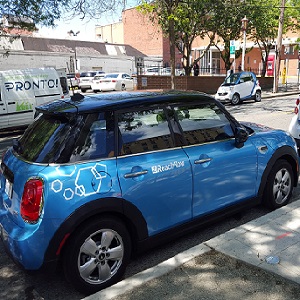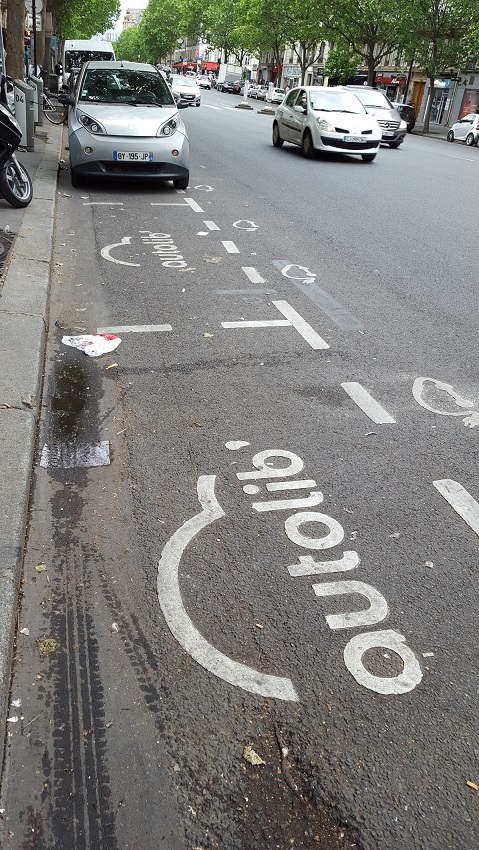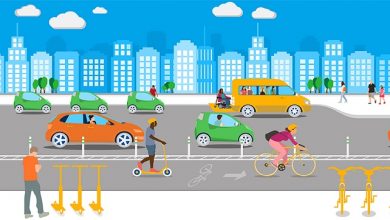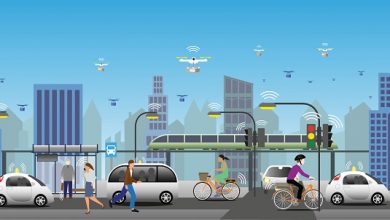Shared Mobility: A COVID-19 Recovery Roadmap

Riding a wave of technological innovation over much of the last decade, new and emerging forms of mobility have made life easier for travellers all across the world.
Ride hailing companies like Didi, Uber, Lyft, and Bolt have transferred the painstaking process of hailing a cab from out on the street to the tip of a finger on a mobile device, generating more than $29 billion in revenue across 110 countries in 2019 alone (1). Car sharing companies like Zipcar, Getaround, and Turo, along with vehicle subscription services like Access by BMW, Porsche Passport, and Audi Select have reconstructed what it means to be a vehicle owner, paving the way for new, cheaper, and communal forms of car ownership. Two wheeled vehicle sharing companies like Mobike, Bird, and Lime now claim prime sidewalk real estate across the world, having introduced fun, first- and last-mile mobility options to commuters and tourists across the world.
These new modes of transportation have collectively made day-to-day mobility overall more convenient, less costly, and more accessible to a wider subset of the population. They have sparked a technological revolution, forever altering the way we navigate our city’s streets.
But as it turns out, many of these new mobility alternatives were built on shaky foundations, leading to a retrenchment of new mobility initiatives throughout 2019 and into early 2020.
The ride hailing industry, propped up by financial support from the private capital markets, is a money pit, as many of the world’s leading providers hemorrhage high volumes of cash in the face of cutthroat competition over customer acquisition and driver retention. Simultaneously, threats from regulators continue to pile up across the globe (especially in North America (2) and Europe (3)), affecting the growth prospects of even the strongest ride hailing operators.
The $4 billion car sharing industry (4) has had equivalent struggles. Led by automotive OEMs like GM, Daimler, and BMW, many operators have seen their investments and pilot programs go sour (another North American issue (5)) due to generally low consumer interest, low margins, complicated fleet management issues, and high price points; the vehicle subscription business is no different.
Even the seemingly omnipresent two-wheeled vehicle sharing industry has felt the recent mobility malaise, as many operators over-deployed masses of free-floating shared vehicles into already saturated markets, failing to adequately match supply with demand.
To add fuel to the fire, despite all of these mobility alternatives touting themselves as viable alternatives to personal vehicle ownership, consumers still haven’t shown a willingness to scrap their cars. In fact, Strategy Analytics research has found that in many segments, use of these new mobility services actually increases the likelihood of an imminent car purchase (6). And even tech-savvy millennial travellers still prefer personal cars for a variety of journeys. They perceive this mode as the safest, most cost-effective, and most convenient for many types of trips, from commuting to errands to vacations and more. In other words: Mobility services are not replacing the privately owned car, they are just augmenting it.
Even though many mobility services faced challenging macro-level headwinds, most were not quite facing an existential threat. Ride hailing companies like Grab and Gojek shifted their focus away from ride hailing and more toward financial services; while Uber and Yandex.Taxi shifted to food and grocery delivery. Car sharing companies like BMW-Daimler’s Share Now and Avis’ Zipcar scaled down their services by abandoning entire markets, focusing more so on particularly profitable cities over others. The challenges of 2019 forced many operators to rethink their business models to become leaner and more diversified, foregoing short- term profits in the name of long term gain.
But now, confronting a pandemic the likes of which no one could have anticipated, the mobility retrenchment of 2019 and early 2020 looks like nothing in comparison to the extinction-level event on the immediate horizon.
The COVID-19 pandemic has laid bare the fragile nature of the entire on-demand mobility industry, putting the past decade of mobility innovation in harm’s way. In fact, the era of new mobility may be fading in the rear view mirror as many overleveraged companies struggle with decreasing ridership and cash flows, debt financing issues, and an overall lack of new investment.
During the peak of the COVID-19 pandemic, ride hailing companies like Uber (7), Lyft (8), and Yandex Taxi (9) all reported monthly ride volume declines of up to 70, 80 or even 90% in some of the major cities in which they operate. Car sharing companies like Volkswagen’s WeShare have delayed global expansion efforts (10). Two wheeled mobility companies like Lime have even seen their valuations plummet nearly 80% from year-ago levels (11). This has forced companies to pare down operations, abandon certain markets, or diversify their revenue streams even more.
Uber, one of the global barometers used to gauge the health of the entire mobility market, announced just last week (12) that it expected to generate only 50% of its revenue from ride hailing moving forward, perhaps an ominous sign for the long term health and vitality of the ride hailing sector, one of mobility’ largest stalwarts. Consumers ought to prepare their goodbyes to the cheap rides they have grown so accustomed to over the past decade, as fewer drivers on the road may lead to longer waits and higher prices down the line.
But although the outlook is stormy in the near term for mobility service providers of all stripes, silver linings can still be found.
Ongoing or upcoming economic downturns are leading consumers to reconsider how they travel, and more fundamentally, how they spend money. Strategy Analytics’ research has found that many consumers are cancelling or postponing several types of major purchases, including cars (13).
Additionally: Once travellers are in the mobility service ecosystem, they tend to be mostly (though not always) satisfied with the services they use. Strategy Analytics research has found that some services have a large percentage of promoters (14).
But on the other hand: The personally owned vehicle has the upper hand over shared transport from a “perceived-risk” perspective, and this will remain the case for the foreseeable future. Consumers now perceive the personally owned vehicle as not only more convenient for most journey types, but now as cleaner and safer. At least 40% of consumers in key Western markets intend to use car rental, ride-hailing, public transit, or car clubs less often in the wake of the pandemic. And over one-third of consumers plan to use their owned car more often (15).
COVID-19 and the associated lockdowns have limited human movement, and as such have negatively impacted privately owned car usage in certain markets. But it has struck an even more significant blow to mobility service providers and transit operators. Public transit, car rental, ride-hailing, and especially car clubs, all face significant uphill battles for ridership after the pandemic (16).
Given these sentiments, it is becoming clear that as huge as COVID-19’s effects have been on car-buying, the new perceived risks of shared spaces will prevent mobility services from immediately capitalizing. And if a mobility service provider does not have a visible plan in place to meet the end user on their terms, the human impact COVID-19 is having on demand can lead to a service’s demise.

So, given this new “ground truth” for mobility services, and the decreasing funds available for MaaS startups to flood markets with supply, providers must think more tactically. Part of this requires renewed focus on the consumer, with thought toward what a traveler needs to feel safe.
Many mobility providers have trumpeted “renewed cleaning procedures” as a way of enticing travelers back to using shared transport. But in practice, these public relations efforts can only go so far. Providers must consider a number of factors from traveler-outward.
First, providers must consider which travelers they are targeting in the first place.
Next, providers must consider why their chosen segment travels from place to place. For example: With white-collar offices largely closed in several Western markets, commutes will not be a normal travel-related use case within some consumer segments for some time.
Finally: For a given user group, providers must consider what a “safe” transport mode looks and feels like in a post-COVID era. For example: Recent Strategy Analytics research (17) in the UK and US has found that though those surveyed viewed driver/passenger partitions as strongly desirable for ride-hailing, respondents saw them as less necessary in privately owned cars for personal use, which is likely to only be occupied by trusted members of a family or common household. Respondents also showed interest in advanced air filtration and movable seating. But requiring a mask for all users of a service has more mixed support.
The ongoing pandemic has radically altered the present and future of many different fields. It could be argued that, other than medicine, the vertical that has been most profoundly affected is transportation. The pandemic has forced citizens and governments worldwide to re-think why people move from place to place. And more importantly, it has forced many to reconsider how people move from place to place, in a mode and manner that is clean, fast, and most importantly safe.
As massive of an effect COVID-19 is having on consumer behavior in all verticals and all levels (from purchase choice, to product/service choice, on down to HMI interactions), some things remain constant. Even through the pandemic, we still see echoes from previous Strategy Analytics research on transport choice and purchase decision-making.
- Final landed cost to the consumer will remain the most important factor for cars and mobility services, even more during the ongoing and potentially worsening economic downturn.
- Products and services, especially remote experiences and travel-related services, must be usable and useful for the context.
- Consumers must feel safe and comfortable using the product or service. Safety and comfort is associated with clean air and surfaces. And additional measures such as health screening and driver/passenger partitions should be considered best practices.
Stakeholders in all verticals, but especially shared mobility, should explore what the concepts of “clean,” “sanitized,” and “safe” mean to their target segments. And more importantly, how they communicate those concepts to hesitant end users, in meaningful ways beyond platitude-filled press releases.
References:
https://www.strategyanalytics.com
(1)Automotive Connected Mobility – Global Ride Hailing Market Overview & Forecast Report H1
2020
(2)North American Mobility Services: The Regulatory Environment
(3)Connected Mobility in Europe: A Closer Look at the Regulatory Environment
(4)Automotive Connected Mobility – Global Car Sharing Market Overview & Forecast Report –
H2 2019
(5)The U.S. B2C Car Sharing Market – Can Operators Actually Thrive?
(6)The Persistent Link Between Mobility Services and Car Buying
(13)Car Drivers Worldwide Have Mixed Feelings on Timelines for COVID-19 Recovery
(14)MaaS Usage, Satisfaction, and Why One Does Not Lead to the Other
(15),(16), (17) Cars in the Time of COVID-19: Consumers Weigh In
(7)Uber Q1 2020, Event on 24
(8)Lyft First Quarter 2020, Lyft
(10)Carsharing: WeShare postpones expansion, Teller Report
(11)Uber in Talks to Lead $170 Million Lime Investment at Lower Valuation, The Information
(12)Uber CEO Dara Khosrowshahi says ride-hailing will make up only 50% of the company’s
business moving forward as food delivery growth surges, Business Insider
About the Author:

Ben Lundin,
Industry Analyst, Strategy Analytics
Ben Lundin, Industry Analyst in the Automotive Connected Mobility service (ACM), covers market drivers, industry activity and platform deployment for mobility service providers. Before joining Strategy Analytics, Ben was a member of the research practice at public relations firm Global Strategy Group and was a business development coordinator at the Carnegie Endowment for International Peace, both in Washington D.C.

Derek Viita,
Senior Analyst, Strategy Analytics
As Senior Analyst for the In-Vehicle UX service, Derek Viita provides consumer-focused insights on every detail of car and mobility-related experiences. Areas of expertise include mobile and integrated HMI, automated driving systems, driver distraction, and transport choice factors. Derek has over a decade of experience advising companies and government agencies on end-user problems and solutions in the automotive and wireless spaces.
Published in Telematics Wire



